#assyrian ART
Text
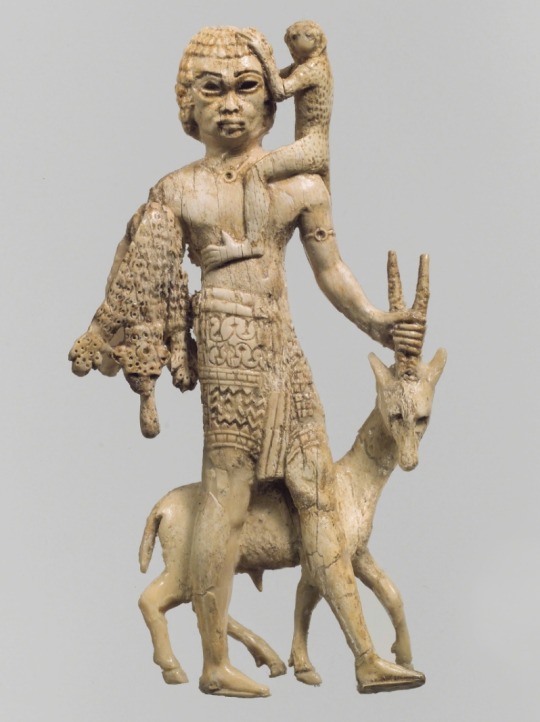
Unknown Assyrian
Statuette of a man with an oryx, a monkey, and a leopard skin, ca. 8th century B.C., Mesopotamia, Nimrud (ancient Kalhu)
Ivory
220 notes
·
View notes
Text
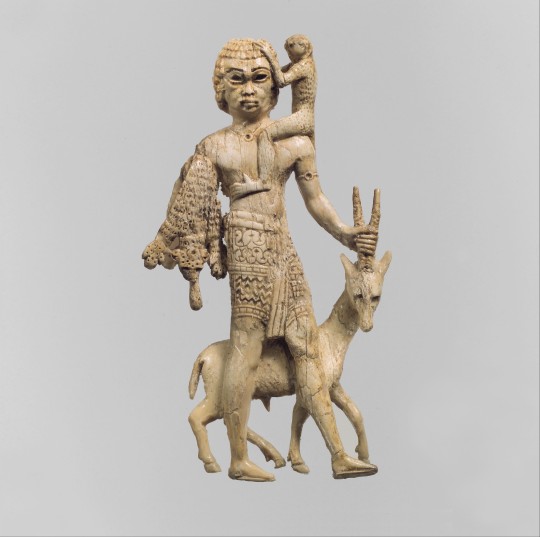
Assyrian ivory statuette group, found with other statuettes in a room at Fort Shalmaneser, Nimrud (30 km south of Mosul in present-day Iraq). A man with a leopard-skin on his right shoulder grasps the horns of an oryx, while a monkey sits on his other shoulder. Artist unknown; ca. 8th cent. BCE. Now in the Metropolitan Museum of Art.
#art#art history#ancient art#Near East#Ancient Near East#Near Eastern art#Ancient Near Eastern art#Mesopotamia#Ancient Mesopotamia#Mesopotamian art#Ancient Mesopotamian art#Assyria#Assyrian art#Neo-Assyrian#sculpture#statuette#ivory#carving#animals in art#Metropolitan Museum of Art
210 notes
·
View notes
Text
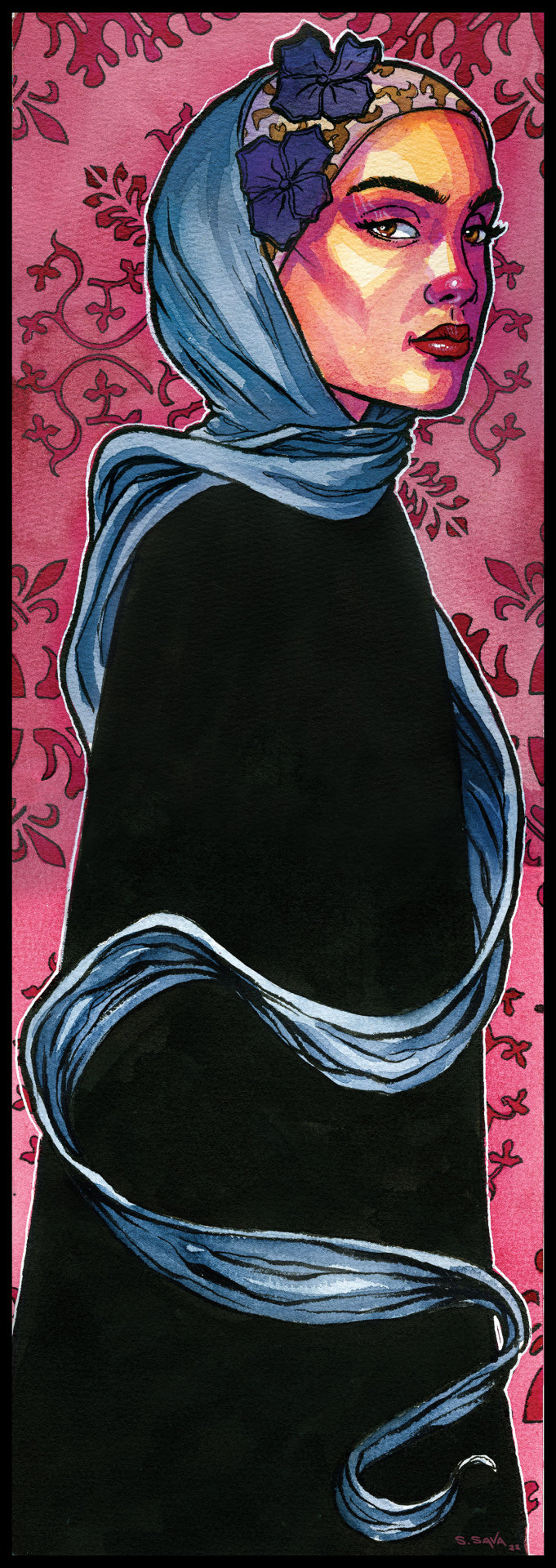
What does the word Genocide mean to you?
For me... the word Sayfo comes to mind.
Sayfo is the word we use for the Assyrian genocide.
In 1915, my grandfather fled his village of Charbash near Urmia in Iran when he was just 11 years old.
The Ottoman Empire took the land from the Assyrians. The indigenous people native to Mesopotamia (where modern Iran, Iraq, and Turkey exist now).
Over 250,000 Assyrians were wiped out by the occupying Ottoman Empire.
Half of the entire population of the remaining indigenous people.
The rest fled for their lives.
My grandfather and grandmother, being two that, thankfully, made it to New York.
Now, Assyrians have no homeland. No country.
An entire ethnic group that has been around for around 3,000 years almost completely wiped out of existence by an empire that no longer exists.
It's just so senseless.
This painting I did of a woman in a Hijab. I have posters of them on my site.
ssavaart.com
All of the proceeds from the sale of this poster is going to Doctors Without Borders.
I'll sign and ship each and every one of them.
I know it's not much. It won't stop a genocide.
But maybe... just maybe... 100 years from now someone's grandchild will be alive and they can tell the story of THEIR people... and what happened to them.
Sending Big Hugs from the Hobbit Hole. ♥♥♥
Scott
#art#artists on tumblr#traditional art#drawing#watercolor art#watercolor#art nouveau#assyrian#genocide#palestine#free gaza#doctors without borders
2K notes
·
View notes
Text


~ Plaque of conjuration against the Lamashtu, called "plaque of the underworld" or Hell Plate.
Period: Neo-Assyrian (1st half of the millennium)
Place of origin: Assyria
Medium: Bronze
#ancient#ancient art#history#museum#archeology#ancient sculpture#ancient history#archaeology#assyria#assyrian#plaque#Lamashtu#conjuring#underworld#hell plate#Neo-Assyrian#bronze
2K notes
·
View notes
Text

Flood tablet/Epic of Gilgamesh, from the Library of Ashurbanipal, Assyrian, 7th century BC
from The British Museum
#history#antiquities#art#ancient history#ancient art#cuineiform#epic of gilgamesh#ancient mesopotamia#assyrian
991 notes
·
View notes
Text
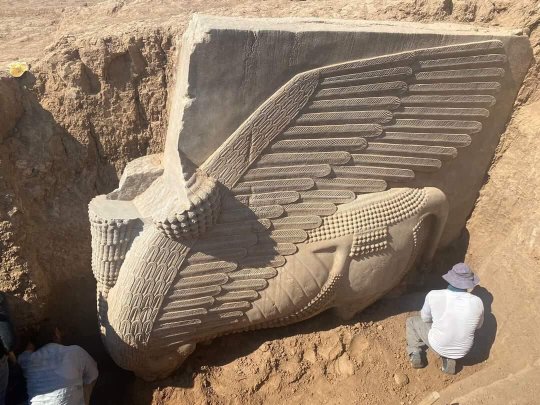
Ancient Assyrian Deity Statue Uncovered in Iraq
In a recent announcement from the The Iraqi State Board of Antiquities and Heritage (SBAH), archaeologists have successfully unearthed a remarkable ancient Assyrian deity statue known as a “lamassu” in Kursbad, Iraq.
A lamassu is a special Assyrian guardian deity, usually portrayed as a mix of human, bird, and either cow or lion features. These unique beings typically have a human-like head, a body resembling that of a bull or lion, and bird-like wings.
Guardian Lamassu sculptures in Assyria
In ancient Assyria, they often crafted pairs of lamassu sculptures and placed them at the entrances of palaces. These imposing figures faced both the streets and the inner courtyards.
What’s unique about these sculptures is that they were carved in high relief. When you look at them head-on, they seem still, but from the side, they appear to be in motion.
While we often see winged figures in the low-relief decorations inside rooms, lamassu were not commonly found as large figures in these spaces. However, they occasionally appeared in narrative reliefs. In these depictions, they seemed to take on the role of protectors for the Assyrians.
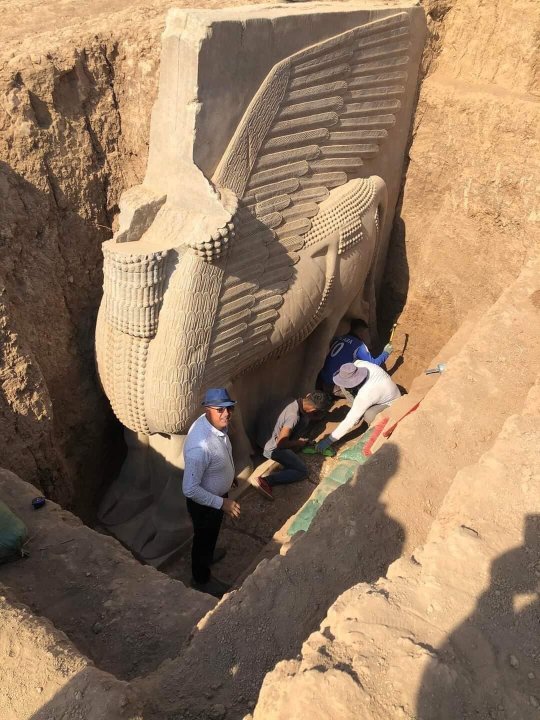
Ancient Assyrian deity statue in Iraq was discovered and then reburied
This discovery took place during their excavations at the 6th gate, situated in the western part of the ancient city of Khursbad.
Khursbad was originally built as a brand-new capital city by the Assyrian king Sargon II. He started this ambitious project shortly after he became king in 721 BC.
However, after Sargon II’s reign, his son and successor, Sennacherib, decided to shift the capital to Nineveh. This move left the construction of Khursbad unfinished, making it a fascinating historical puzzle.
As per the press release, the statue was originally discovered in 1992, when a team of Iraqi archaeologists stumbled upon the Assyrian deity statue. After the initial discovery of the lamassu, its head was unfortunately stolen in 1995. However, it was later recovered and is now safely preserved in the Iraqi Museum.
The main body of the Assyrian deity, was reburied to protect the statue and the surrounding architectural remains, a decision that likely saved it from destruction by ISIS, which systematically looted and destroyed the remains of Khursbad.
Collaboration between Iraqi and French archaeologists
In a remarkable collaborative effort between Iraqi and French archaeologists, Professor Dr. Ahmed Fakak Al-Badrani has spearheaded a mission that recently re-excavated the lamassu. This event marks the first time in thirty years that this ancient wonder has been unveiled to the world.
As stated by Dr. Layth Majid Hussein, the Chairman of the General Body for Archaeology and Heritage, the team is presently evaluating the condition of the lamassu to chart their forthcoming actions.
By Nisha Zahid.


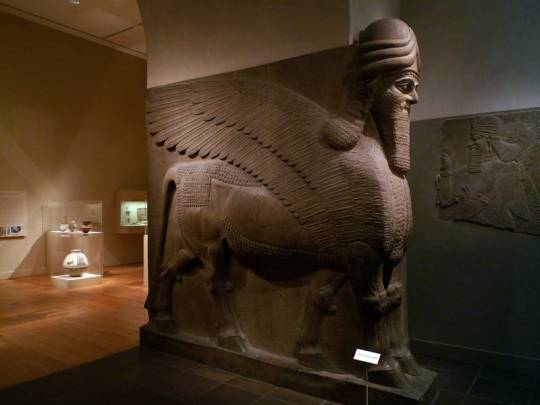
#Ancient Assyrian Deity Statue Uncovered in Iraq#Kursbad Iraq#lamassu#sculpture#stone sculpture#ancient artifacts#archeology#archeolgst#history#history news#ancient history#ancient culture#ancient civilizations#assyrian history#assyrian empire#ancient art
508 notes
·
View notes
Text

Cesare Saccaggi (1868-1934)
"Great Semiramis, Queen of Assyria" (c. 1905)
Oil on canvas, gold and precious stones
The myth of Semiramis has its roots in late antiquity. Historiography, religion, art and literature have contributed to passing on different and contradictory legends linked to her figure over the centuries: some recognize her as the enlightened Assyrian ruler Shammuramat, wife of King Shamshi-Adad V and regent of his son Addu-Nirari III--to whom we owe the realization of the hanging gardens of Babylon.For others, Semiramis is the daughter of a nymph, abandoned in the desert and then fed by doves - the 'daughter of the air', according to Calderón de la Barca and Carlo Gozzi. Or she is the daughter of the goddess Derceto and the Syrian Caistro, married first to Onne, then to King Nino, with whom she had a son who, according to tradition, when he became an adult, chased her from the throne and killed her. During her reign, Semiramis conquered Mesopotamia, Egypt and Ethiopia. Herodotus and Diodorus Siculus speak of her as a great and good sovereign.
#paintings#art#artwork#painting#female portrait#cesare saccaggi#oil on canvas#fine art#italian artist#gold#precious stones#portrait of a woman#big cat#animals#costume#costumes#history#mythology#assyrian#ancient assyria#aesthetic#aesthetics#white dress#dressess#early 1900s#early 20th century
409 notes
·
View notes
Text

Judith holding the Head of Holofernes by Jean-François Godefroy
#judith#holofernes#art#jean françois godefroy#judith and holofernes#biblical#bible#assyrian#assyria#general#book of judith#bethulia#siege#war#camp#tent#city#religion#religious art#christianity#christian#jewish#nineveh#nebuchadnezzar#mesopotamia#mesopotamian#sword#helmet#shield#heroine
91 notes
·
View notes
Text
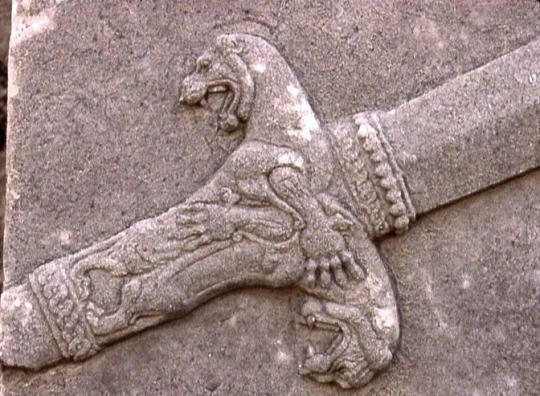
Assyrian relief sculpture of a decorated scabbard with lions.
233 notes
·
View notes
Text
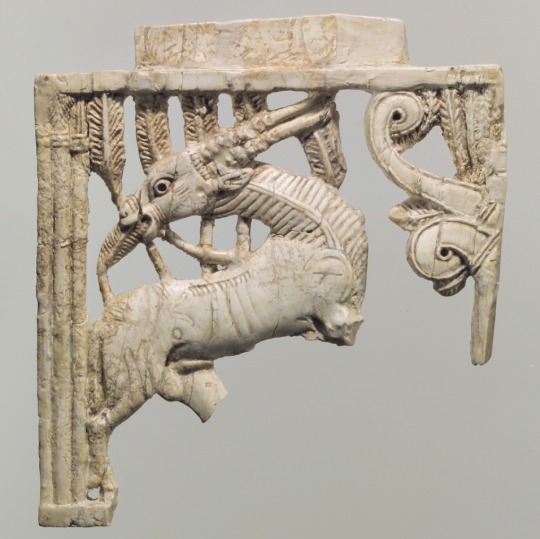
Unknown Assyrian
Openwork furniture plaque with a grazing oryx in a forest of fronds, ca. 9th–8th century B.C., Mesopotamia, Nimrud (ancient Kalhu)
Ivory
175 notes
·
View notes
Text
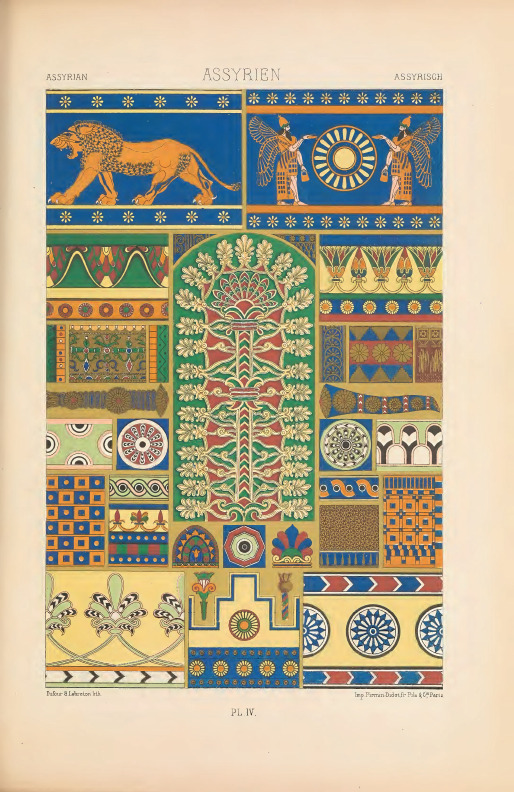

Albert Racinet's "Polychrome Ornament," 1869
PLATE IV
ASSYRIAN ART
EXAMPLES OF POLYCHROMATIC DECORATION
TWO distinct periods may be noted in Assyrian art: the first, that of the foundation of Babylon by the Nabateans, on an alluvial soil destitute of stone quarries-a period characterized by the exclusive use of brick, an.cl in which architecture was confined within very narrow limits; and a second period, that of the foundation of Nineveh by the Scythians, the conquerors of primitj.ve Babylon, in a region where basalt ancl numerous stone quarries rendered possible a monumental architecture quite unknown to the Babylonians.
It is to this Ninevite period, which might also be called the Scytho-Assyrian, that the majority of the remains collected in the museums of London and Paris belong; as also do the various specimens given in our plate.
NINEVEH - PALACE OF KHORSABAD.
No. 1.-Painted sculptures, after Layard.
Nos. 2, 3, 4.-Painted sculptures, after Victor Place. No. 5.-Bricks inlaid in colours, after Layard.
Nos. 6 to 10.-Enamelled bricks, after Victor Place. Nos. 11 to 18.-Various specimens, after La yard. Nos. 19, 20.-Paintings, after Victor Place.
Nos. 21 to 23.-Restorations, after Botta
#Albert Racinet#art#ancient history#ancient art#1800s art#1800s#19th century#ancient assyria#assyrian#antiquity#illustration#design#aesthetic#cultural art
54 notes
·
View notes
Text

Assyrian aesthetics fashion study.
I love men with the drip.
Please do not consider this as accurate material for historical fashion, it`s just an exercise to expand visual library.
369 notes
·
View notes
Text

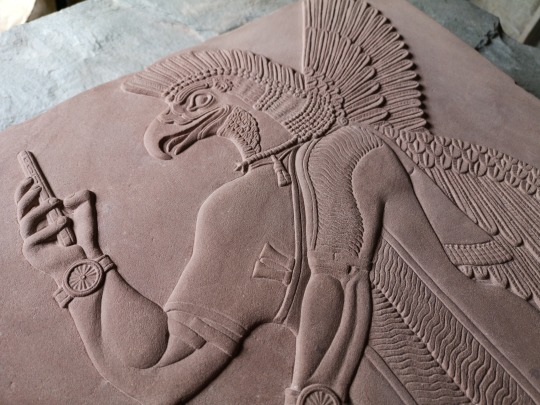

Out of place artifact.
Hand carved sandstone, based on an ancient Assyrian Winged Genie, but with a twist.
#carving#stone carving#art#traditional art#sculpture#assyrian#ancient history#archeology#history#ancient artifacts#mesopotamian art#mesopotamia#mesopotamian#genie#ancient art#ancientmonuments#antiquities#neoassyrian
132 notes
·
View notes
Text

~ Furniture plaque carved in relief with lion-headed figure.
Period: Neo-Assyrian
Date: ca. 8th–7th century BC.
Place of origin: Mesopotamia, Nimrud (ancient Kalhu)
Culture: Assyrian
Medium: Ivory
#ancient#ancient art#history#museum#archeology#ancient sculpture#ancient history#archaeology#mesopotamia#Assyria#neo Assyria#assyrian#nimrud#kalhu#lion#plaque#furniture plaque#ca. 8th century B.C.#ca. 7th century B.C.
919 notes
·
View notes
Text

Fragment of an alabaster relief depicting a cavalryman leading his horse to a river, Assyrian, 7th century BC
from The Metropolitan Museum of Art
439 notes
·
View notes
Text
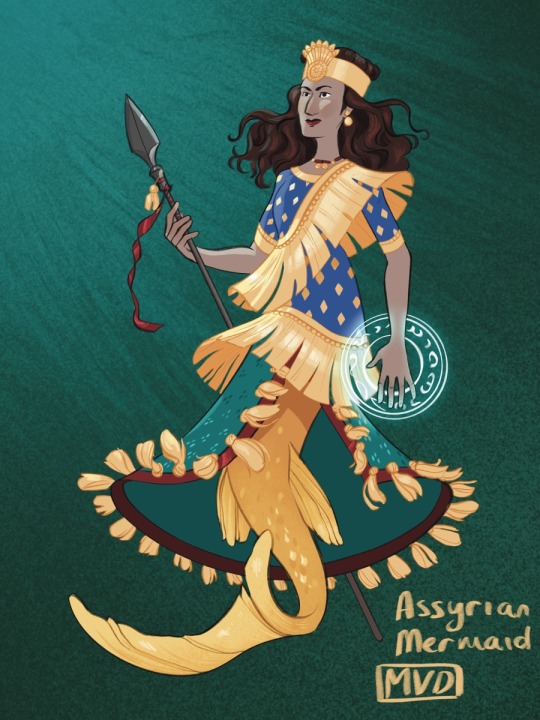

Assyrian mermaid for the historical mermay prompt by chloe.z.arts on instagram!
They invented writing and iron, so I wanted to include those!
23 notes
·
View notes